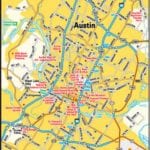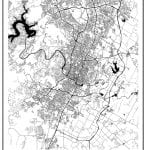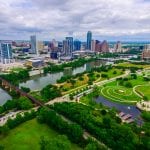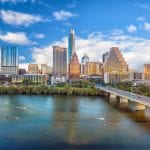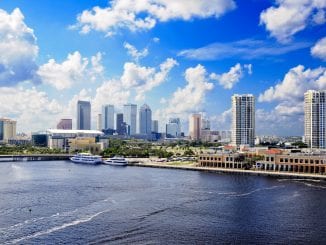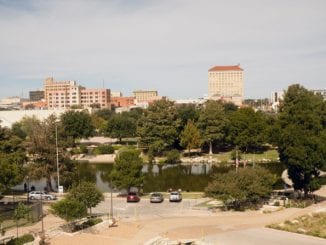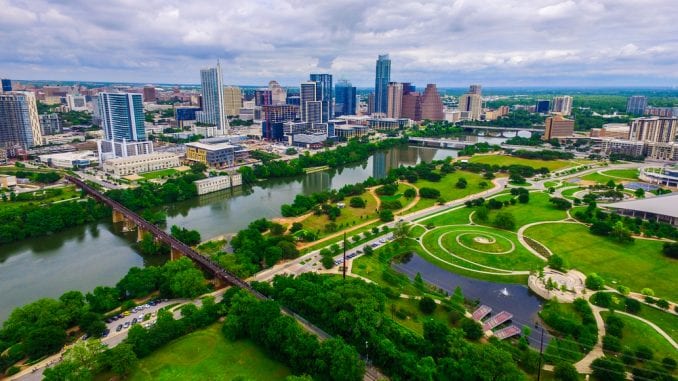
Map of Austin Texas Area | What is Austin Known for?
BOOK HOTEL IN ANY PART OF AUSTIN AT GREAT PRICES
A popular slogan on T-shirts yells: “Keep Austin Weird!”. Visitors will find the motto to be true – Austin nurtures a liberal, Bohemian lifestyle at odds with being the capital of Texas. For a visitor, it opens up a vista of possibilities.
Where is Austin Located?
Austin is located in South-Central Texas – 75 miles north of San Antonio, and 195 miles south of Dallas along I-35; and 165 miles west of Houston along US 290 via I-10. It is situated on the banks of the Colorado River where it crosses the Balcones Escarpment.
Austin is the capital of the State of Texas and the seat of Travis County.
Austin-Bergstrom International Airport serves the city.
History of Austin, Texas
Texas gained independence from Mexico in 1836. Austin was incorporated in 1839, building on the site of a buffalo-hunting region named Waterloo (mostly inhabited by Tonkawa and Comanche tribes), after being identified as the site for the capital of the newly formed Republic of Texas. It was named after Stephen F. Austin, the Father of the Republic.
Austin grew over time, surviving a movement of the capital to Houston for 4 years in 1842. When Texas joined the American Union in 1845, Austin was reinstated as its capital.
Austin did see growing commerce as an agricultural exchange hub, aided by the arrival of the Houston and Texas Central Railroad. However, for the longest time, it remained a sleepy university town (albeit with a vibrant music, art and bohemian cultural scene).
All that changed in the late 1990s with a boom. Austin today is a major hub for research and development, computers and biotechnology – among others.
Austin Size and Population
Austin is the eleventh largest city in the nation (the fourth largest city in Texas), with a population of 964,254.
The city is spread over a 272 square mile area.
Is Austin a Good Place to Live?
Austin is considered to be a good place to live and raise a family for a number of reasons.
Median Income vs. Income Required to Live Comfortably
An analysis of major US cities prepared by gobankrates.com lists median incomes against the amount it costs to live comfortably (using the rule that 50% of income is spent on necessities, 30% on extra spends and 20% is saved).
Residents of Austin have a median income of $63,717, while the income needed to live comfortably varies between $98,007 (for homeowners) and $94,455 (for renters).
The shortfall of $30,000+ is about the same as in Houston, and modest in comparison to the six-figure shortfalls in cities like New York and San Francisco.
Also, Texas does not have a state income tax, which helps.
An Educated, Talented and Friendly Population
Austin has a majority European population, with strong pockets of Hispanics, African Americans and Asians. The highly educated and bohemian bent of its populace – in keeping with the artists and musicians that thrive in Austin, means that self-expression is a prime directive. Austin residents always seem ready to accept new ideas from neighbors and visitors.
Best Places to Live in Austin
The definition of best neighborhoods to live in has morphed significantly since the late ‘90s, with the expansion of the city into pockets that allow for both urban and more rustic living:
- South Austin/South Lamar/South Congress – situated right where it’s happening in Austin, this area (SoCo is across the Colorado) is where the hip people live – with bars, restaurants, art, and music flourishing all around.
- North Loop – a young, vibrant neighborhood close to UT, a mix of funky bars and boutiques
- Old West Austin – the most popular mix of the new and old in the city, with history and nature existing side by side for its residents.
- Cherrywood, East- and East-Central Austin – as with most established neighborhoods close to downtown Austin and UT, these areas combine rustic stretches with the true Bohemian spirit of Austin.
- Allendale – contiguous to Cherrywood, this area has a large number of one- and two-bedroom homes suitable for quiet city living, but with access to many unique shops and eateries, forming a closely knit and highly liked community feeling.
- Mueller – an area that sprung up around the site of the former Robert Mueller Airport, close to Cherrywood and Allendale. A planned pedestrian community, it is an enclave for many residents who like the suburban feeling within close proximity of the city.
- The Domain – a newly designed community, a child of the tech boom, this is a growing area frequented by young professionals – a walking environment that nurtures the body and the soul.
- Westlake Hills – one of the most affluent suburbs, newly minted, this area is classically Austin, city living with lots of exposure to rustic charm.
What is Austin Known For?
Austin is known to be a place with a mind of its own. Variously dubbed the “Live Music Capital of the World” and “The Drunkest City of the US”. Suffice it to say, Austin residents love their food, wine and entertainment – and are always available to party! But there’s more …
Technology and High-Tech Hub
Austin shed its “sleepy town” designation during the tech boom of the ‘90s. It now has a reputation of being the Silicon Valley of the Southern US, with concentrations in computer technology, software development, semiconductors, and biotech. Large companies headquartered in Austin, such as Dell, Whole Foods, and National Instruments, have increased the young professional population in the area manifold by drawing world class talent to the city.
The Music Scene
Live music has taken on a life of its own in Austin. From the iconic Sixth Street venues to the South by Southwest Music Festival, Austin has created a unique image – not a specific genre like blues, jazz, country, folk or bluegrass but any and all of them. In other words, Austin welcomes experimentation and stresses inclusivity.
Famous Austin music stars include Stevie Ray Vaughn, Janis Joplin and Willie Nelson, but what makes Austin hop is the constant stream of new talent that flock there to feel out how their natural talents can be best expressed.
A nearby lounge or stage can be found readily anywhere in the city – in fact, the airport itself has stages with bands serenading arrivals and departures!
Parks and Nature Walks
Austin is located on the Colorado River and at the northern end of the Texas Hill Country, and getting away from the central city immediately opens up to natural vistas to enjoy. Among some of the great trails and viewing points are Mount Bonnell (also called Covert Park – a high vantage point atop the Colorado River Gorge with stunning views of the river below and downtown), Zilker Park, the Balcones Canyonland Preserve and the Ladybird Johnson Wildflower Center.
Beside these, other enclaves beckon, among them the McKinney Falls State Park, the Umlauf Sculpture Garden and Museum and the numerous biking, hiking and boating areas along Lake Austin and the Colorado and Onion Rivers.
Texas Hill Country
The undulating stretch of the Texas Hill Country along the highway between Austin and Austin is a pleasant drive out of town for a picnic, or a stopover to shop or eat in many scenic locations along the way. The Wild Basin Wilderness Preserve is a classic hill country location for nature lovers, just south of the city.
Family Attractions a Short Drive Away
A little over an hour drive away lies San Antonio, with its many attractions for tourists (the Alamo and Mission Trail) and families (Sea World, Zoo, Six Flags, River Walk, Tubing and Rafting on the Guadalupe River etc.).
World Famous University and Education Options
Austin has excellent school districts and one of the top universities in the country – the University of Texas main campus. The Longhorns stadium is raucous and loud every gameday.
The State Capitol
One of the famous sites is the Capitol Building built in pink granite and designed after the US Capitol. It was built over an earlier building that was destroyed in 1881.
Best Times to Visit Austin and How to Get Around
Though the heights of summer might be uncomfortable, the music, arts and festival scenes draw visitors on a year-round basis.
While a car might be good for traveling to locations outside the central city, it’s a pain to find parking conveniently close to the Capitol.
Bikes, buses and light rail are easier ways to get around. Cabs do not cost very much, but finding them may prove more of a challenge.
See Also
Discover what keeps Austin, Texas so Weird


